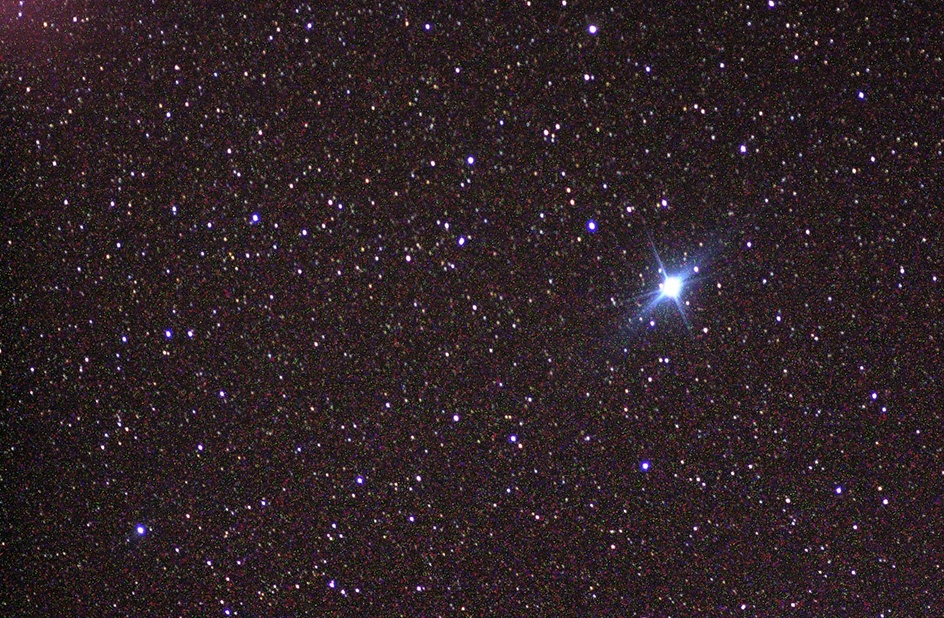Canopus, << kah NOH pus, >> also known as Alpha Carinae, ranks as the third brightest star in Earth’s sky. Only the sun and Sirius appear brighter. Canopus is the brightest star in the constellation Carina, the Keel. Historians do not know the exact origin of the name Canopus. Canopus lies in the southern sky but can be seen from as far north as the southern United States and the northern coast of Africa. Because Canopus is bright and easily located, many space probes use the star for navigation purposes.

Canopus is an extremely large type of star called a yellow-white supergiant. Its yellow-white appearance results from relatively high surface temperatures of nearly 8000 K. One kelvin (K) equals one Celsius degree above absolute zero (–273.15 °C). Because of its large size, Canopus gives off nearly 15,000 times as much light as does the sun. However, Canopus appears dimmer than the sun because it lies at a great distance from Earth, about 310 light-years away. One light-year is the distance light travels in a vacuum in a year, about 9.46 trillion kilometers.
Astronomers do not fully understand how yellow-white supergiants form, but the stars seem to be related to large, relatively cool stars called red giants. Canopus may once have been a red giant, or it may be in the process of becoming a red giant.
Canopus has the spectral type F0Ib. For more information on spectral classification, see Star (The Hertzsprung-Russell diagram) .
See also Red giant ; Star (table: The 10 brightest stars as seen from Earth) .
